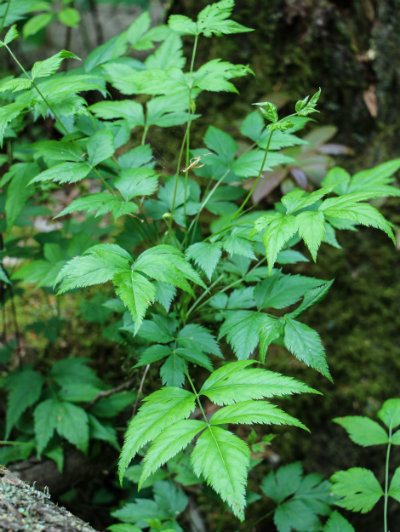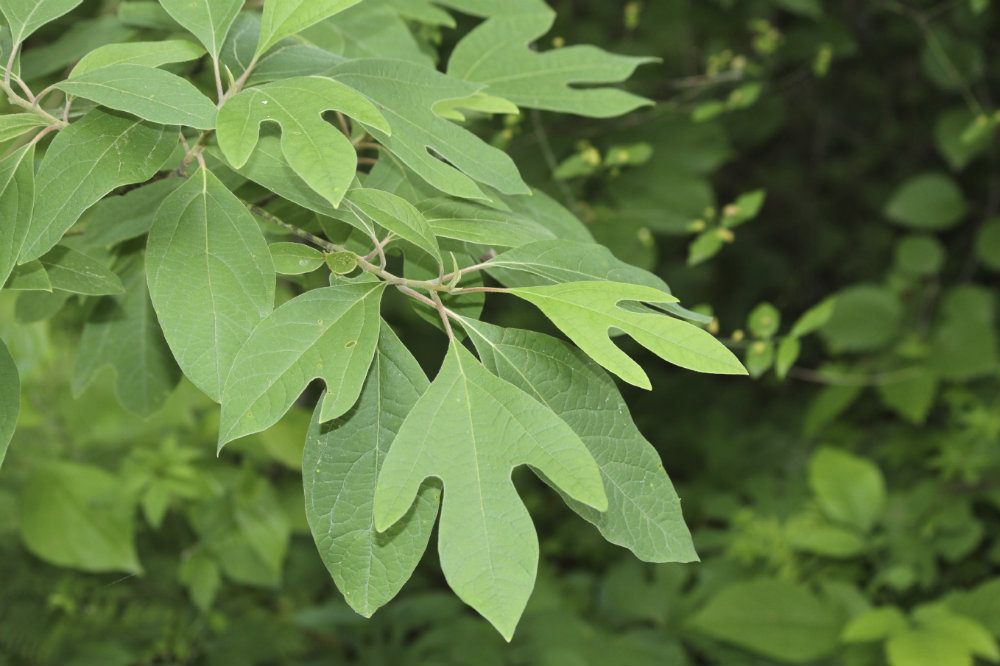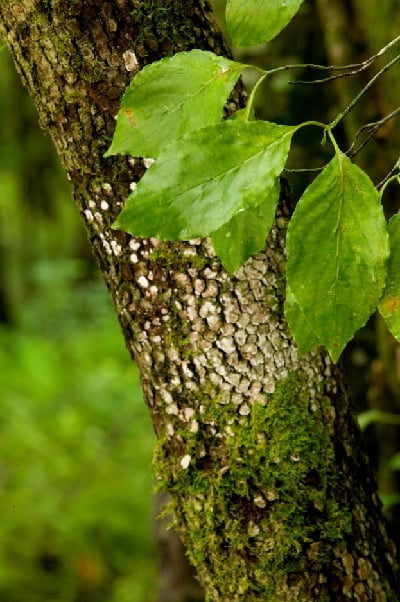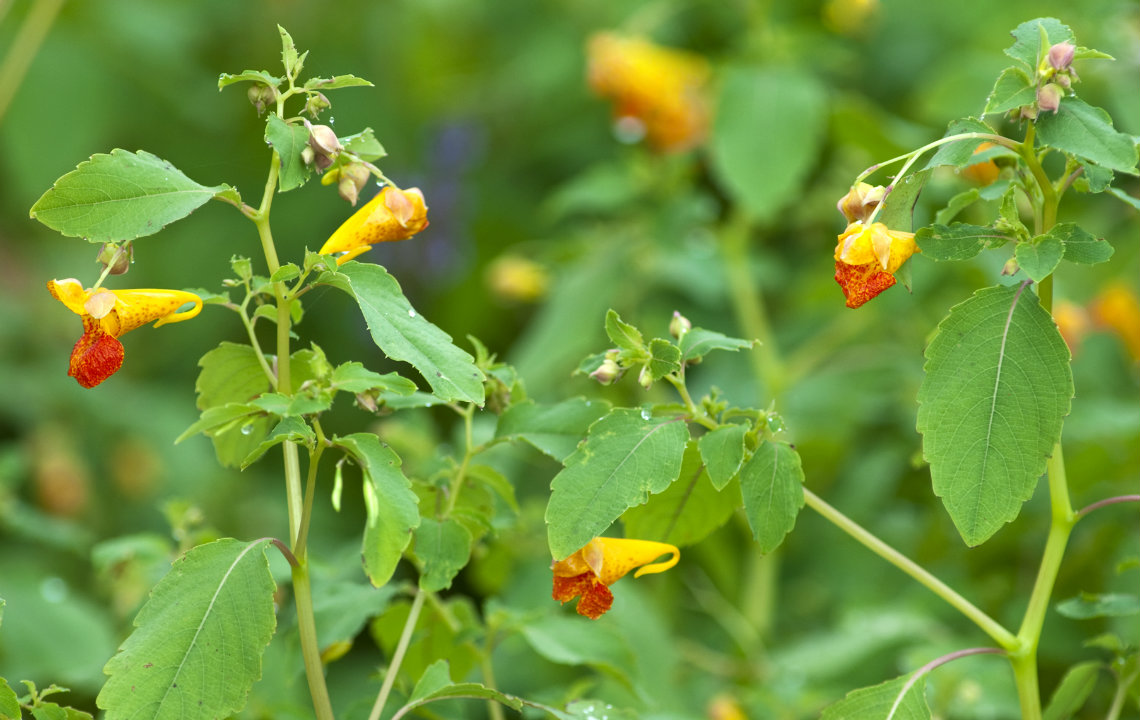When most of us think “herbs” or “herbal medicine” we probably think of alternative health meccas out West.
But did you know the Southern states rival the West as an epicenter of medicinal plant diversity?
What’s more, many of the world’s most powerful, historical, and sought-after medicinal plants could be growing right in your backyard or on your sidewalk.
 Today we talk with naturalist, author, composer, and experienced environmental educator Mark Warren, of Medicine Bow School of Primitive Earthlore in Northeast Georgia, about five of his favorite common Southern wild medicinals.
Today we talk with naturalist, author, composer, and experienced environmental educator Mark Warren, of Medicine Bow School of Primitive Earthlore in Northeast Georgia, about five of his favorite common Southern wild medicinals.
Mark has spent more than 20 years studying and educating on a wide variety of environmental topics such as: ecology, botany, conservation, archery, Native American use of plants, wilderness survival and wild foods.
A lifelong student of nature with a pre-med degree to boot, his expertise in wild medicinal plants comes from years of studying Native American tradition and folklore specific to plants for survival situations.
Mark passes on this ancient wisdom to adults, teens, and children through Medicine Bow School of Primitive Earthlore in the Appalachian Mountains, as well as his books.
Why the South is such a hotbed for medicinal plants
While reality TV has popularized the colorful production and trafficking of wild ginseng in Appalachia, the South’s medicinal plant diversity goes far beyond its humble reputation.
“We are located on a certain latitude that gives us a great variety of plants because our area can contain plants that belong in the North and the tropical areas,” says Mark.
“We’re also located on the southeastern part of a landmass, and because of the way the planet rotates toward the east, it creates certain weather conditions that make this a fantastic place for plant diversity.”
“A similar place to this would be in the Orient, because they’re also on the southeastern side of a landmass near an ocean. And that’s one of the reasons why many plants we have here are indigenous to the Orient. Unfortunately that includes kudzu, honeysuckle and privet but also many beneficial medicinal plants.”
Five of Mark’s Favorite Wild Medicinal Plants of the South
Mark shares five of his favorite medicinal plants indigenous to the South including their traditional Native American use, personal testimonies, information on their chemical components, tips on identification and how they can help you in a survival situation.
 |
| Broad Leaf Plantain |
#1: Broad Leaf Plantain for insect bites
It was with zero hesitation that Mark recommended Broad Leaf Plantain, a common plant found growing in sidewalks or on the side of the road, as a plant of value, especially during Southern summers. He explains:
“I think the most commonly needed plant in the summer months is Broad Leaf Plantain. It serves as a wonderful poultice for drawing out insect venom and it has anti-inflammatory agents.”
“You simply crush the leaf and apply it directly to the affected area. And it’s the plantain with the broader leaf, as opposed to Narrow Leaf or English Plantain.”
Mark also made this important point on Broad Leaf Plantain and snake bites:
“There is a lot of folklore surrounding the use of Broad Leaf Plantain being used for snake bites, but you can’t expect a leaf poultice to help you with an intramuscular injection. Rather it will help a subdermal injection like from a yellow jacket, wasp, or hornet.” To see what broadleaf plantain looks like, click here.
#2: Wild Impatiens, a.k.a. Jewel Weed, for itches and poison ivy
Anyone fortunate enough to have attended a medicinal plant class with Mark will have learned about Jewel Weed, also known as Wild Impatiens (see photo at top).
“One of the plants that can offer great comfort in a survival situation (or others) is Jewel Weed. It contains a natural soap-like chemical, known as saponin, which is believed to serve as an anti-inflammatory. It works like cortisone when you apply the juices topically.”

“I’ve never seen it fail on any kind of itch in less than 2 seconds. It’s a wonderful relief for poison ivy rash.”
Jewel weed is also a life-saver for chigger bites, says Mark:
“A lot of people who don’t know about the South don’t know about chigger bites and how devastating they can be. If you encounter chiggers by setting up camp in the wrong place or by sleeping in the wrong clothing, you can literally get 200 chigger bites overnight, and it can be so demoralizing to someone in a survival situation. So something that can draw out whatever the insect puts into you is certainly of great value.”
There is a myth that suggests Jewel Weed always grows near poison ivy, but Mark said that is not true.
 |
| Yellowroot / Photo courtesy of CoreyPine Shane, Blue Ridge School of Herbal Medicine, www.blueridgeschool.org |
He had this to add on finding and identifying Jewel Weed.
“You’ll find Jewel Weed always growing in an area with an ample source of water. This could be in a ditch, by the side of the road, in lowland next to a meadow or swamp, or most commonly next to a stream. Unless there is a break in the forest canopy it won’t be in the deep woods because it needs plenty of sunlight.”
“It has tiny hairs on its leaf that trap air, and when you put it underwater the leaves light up and shine. It’s a little miracle plant.”
#3: Yellowroot for stomach upset and mouth sores
“A third one would be stomach upset, and for that I always recommend Yellowroot. It contains a component called berberine and that’s the same chemical found in Goldenseal.”
Goldenseal is also native to the South and is a popular herb used in many over-the-counter immunity formulas.
“The chemical is best known for its healing properties to the mucosa which exists in the lining of your mouth, your lips, nose and your intestinal tract. That can also include relief for all kinds of mouth sores caused by H. Pylori bacteria, nasal sores and even ulcers.”
For mouth sores, Mark recommends taking a piece of Yellowroot, chewing it, and holding it in your mouth for relief within a few hours.
“I’ve also learned that chewing on a small section of the root and swallowing the juice, which is very bitter, resolves stomach upset unless it’s caused by a stomach virus. Please note that overuse of Yellowroot can be dangerous.”
“It needs sunlight and grows almost always on the banks of a creek, you can sometimes find it on a flood plain, but the classic Yellowroot is one leaning over the water. It likes to have a bank that water will run off, not saturate it, so a slanted bank right next to a creek is often where you’ll find it.”
#4: Sassafras for immunity and gastrointestinal pathogens
Mark recommended Sassafras with a little explanation to build his case.
“In the 70s the surgeon general declared Sassafras to be carcinogenic. Not being a practicing chemist myself, I have never analyzed a plant in a lab. But the research done by others suggests putting a black mark on Sassafras may have been a hasty decision.”
Mark continues, “With Sassafras, they isolated the chemicals found in the root, and one of those chemicals is safrole. Safrole is also found in black pepper, which we already knew was a carcinogen. And this is all about moderation and is not intended to scare people off black pepper. Anything can be dangerous in large quantities, even water.”
“So they took the isolated chemicals found in the root and began injecting it into laboratory rats until tumors formed. They just kind of went at it without any reserve at all, and therefore published that Sassafras was carcinogenic. They didn’t use the whole plant with its balance of chemicals. To give you an idea, 1 can of beer is 14 times more carcinogenic than a cup of Sassafras tea.”
 |
|
Sassafrass |
Mark continues:
“In Sassafras tea we have a balance of chemicals with nothing isolated, and it is much more dilute. People have been using the tea for centuries as a spring tonic, meaning they drank it in the spring to thin the blood for the hotter months and to boost their immune system from pollens, hay fevers, etc.”
“And why would it boost the immune system? Probably because it has a carcinogen in it. So when we take small amounts it challenges and boosts our immune system.”
Beyond immune benefits, Sassafras is your best friend for gastrointestinal issues caused by bad water or spoiled food.
Mark offered this personal testimony on the value of Sassafras tea in the wilderness:
“I was out on a self-imposed survival trip and I had caught a fish—and when you take a life like that you really want to make total use of it. But I also knew I wanted to spread out my yield so I could have fish for two days. To do this I made a little primitive refrigerator in the creek, like the pioneers used to, and stored the fish there.”
“When I went back to retrieve it the next day, I could smell it may have begun to go bad and I debated whether or not to eat it. I probably shouldn’t have done it but I did…and I got so sick I don’t know if I could have walked out of there. But I did one smart thing. I made a batch of sassafras tea beforehand. After I got sick I drank it. And, this is the honest truth, within 30 minutes I was completely well and able to function perfectly. After that I became a believer.”
So how does Sassafras Root work on food poisoning? Mark explains:
“Sassafras Root tea kills microorganisms in your gut that can be pathogenic, so if you get into bad water or spoiled food, Sassafras is your remedy. Bad water is the worst issue in a survival situation, because you’ll get dehydrated from diarrhea which will cause you to drink more water creating a vicious cycle.”
 |
| Flowering Dogwood / Photo courtesy of Mark Warren |
#5: Flowering Dogwood, Inner Bark for migraine headaches
Migraine headaches can be debilitating, whether you’re in a survival situation or not, but Mark has found a very effective natural remedy in Flowering Dogwood.
“I know this sounds very suspect and hopeful because so many people have nothing that works for them for migraines. All I can tell you is from my own experience.”
“I’ve had 9 different students come to me and say they have to go home because a migraine is coming on. They used this Flowering Dogwood inner bark tea, by their choice, and in about an hour were able to come back to class with no pain.”
Mark went on to explain the inner bark of Flowering Dogwood has been used extensively by the United States Government as a fever reducer.
“Flowering Dogwood was used for those times in history when we couldn’t keep up with our need for quinine, such as during the civil war when typhoid, typhus and malaria were rampant among our soldiers. So we ran out of quinine and the U.S. government issued flowering dogwood as a fever reducer,” says Mark.
“The reason it works is because of its chemical compound, cornic acid, which is chemically similar to salicylic acid, the basis for aspirin.”
Herbalists recommend flowering dogwood bark be used dried, but Mark has used it “green,” the size of a traced pinkie finger infused in 1 cup of water, and has had no problems using it this way.
Learn to Identify and Use Wild Plants (without harming yourself)
Mark is in the process of self-publishing a book about medicinal plant identification which will be available this summer, but he believes every plant-enthusiast should begin their journey with a mentor.
“The real way to do it is to start with a teacher. When you start out on your own it is just too easy to make mistakes and convince yourself to try things that you probably shouldn’t.”
“When you have someone to help you avoid mistakes, that’s the way you’ll be able to expand your knowledge of plants safely.”
Mark recommends checking with your local nature center or botanical garden to find a teacher or mentor.
“You also need to learn to use a book through a process called keying-out. This is a series of questions you go through that takes you to a specific page in a wild plant reference book. That’s one of the things I teach students here, and I always recommend the user-friendly book: “Newcomb’s Wildflower Guide” by Lawrence Newcomb, published by Little Brown.”
Mark also offers a variety of on-site courses at Medicine Bow School of Primitive Earthlore in Dahlonega, GA. I was fortunate enough to attend a weekend course on medicinals and forest food back in 1998 and would highly recommend Mark’s courses to adults, teens and children.
To learn more about Mark Warren, his books, musical compositions and his classes visit: www.medicinebow.net.

























